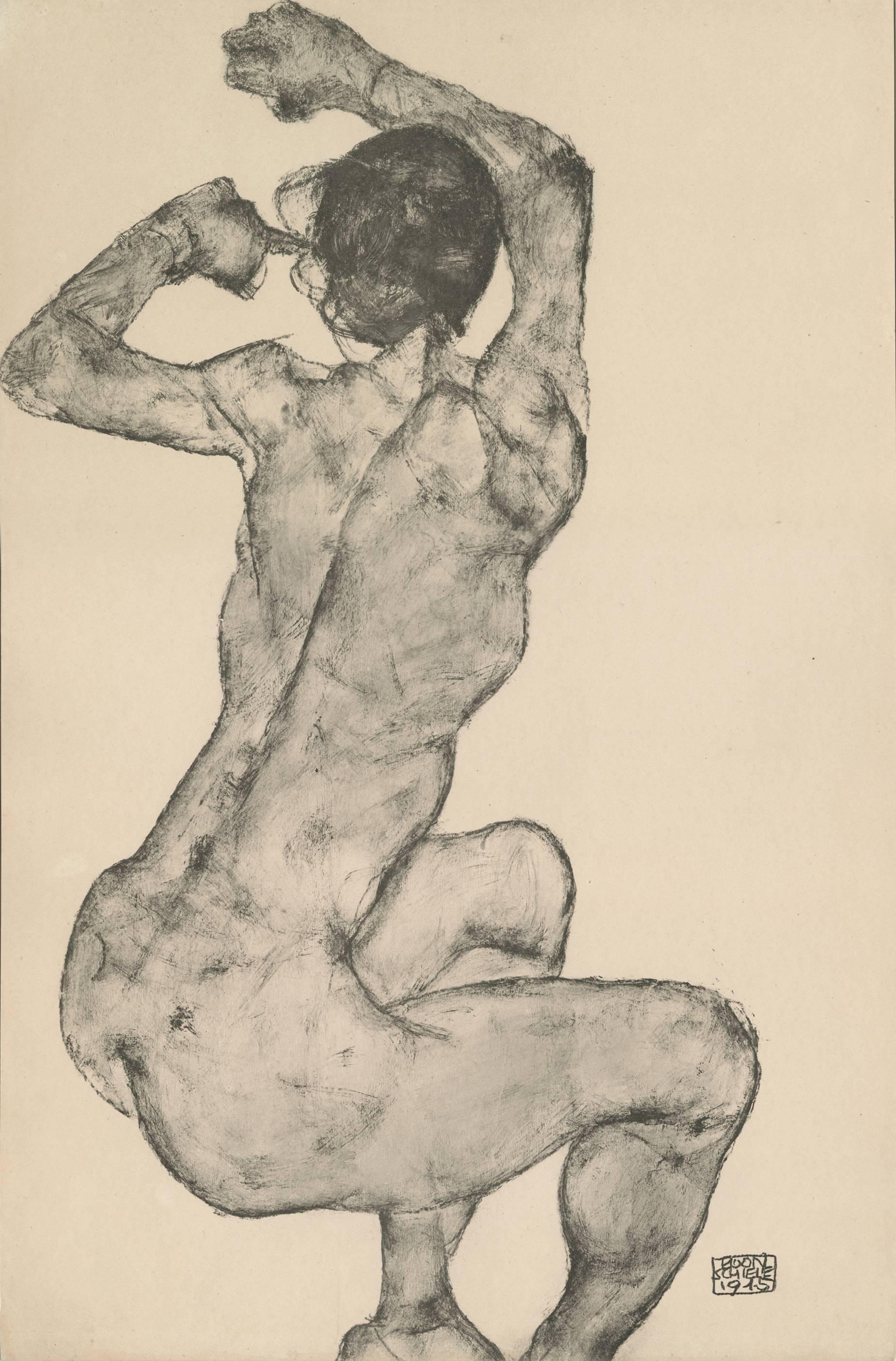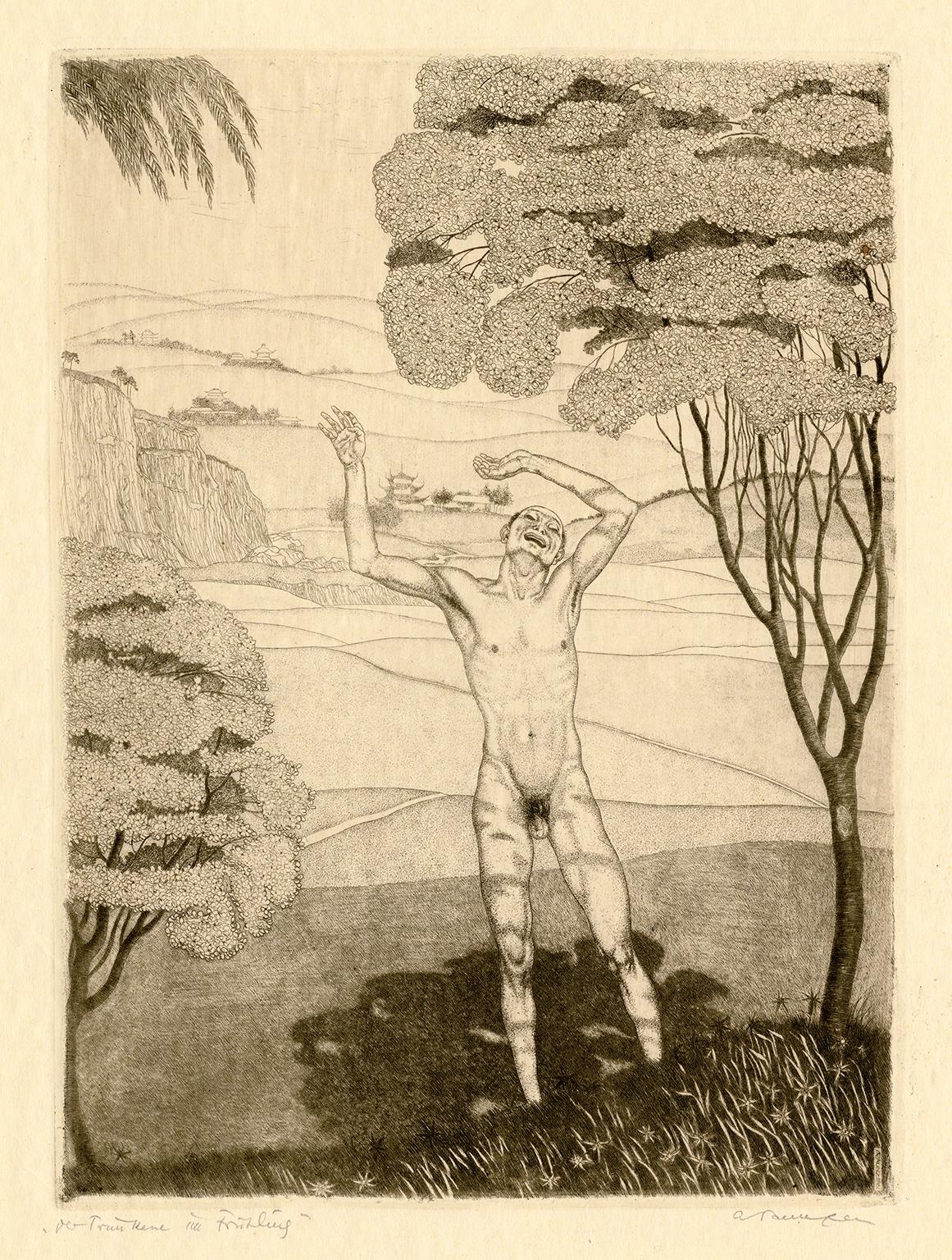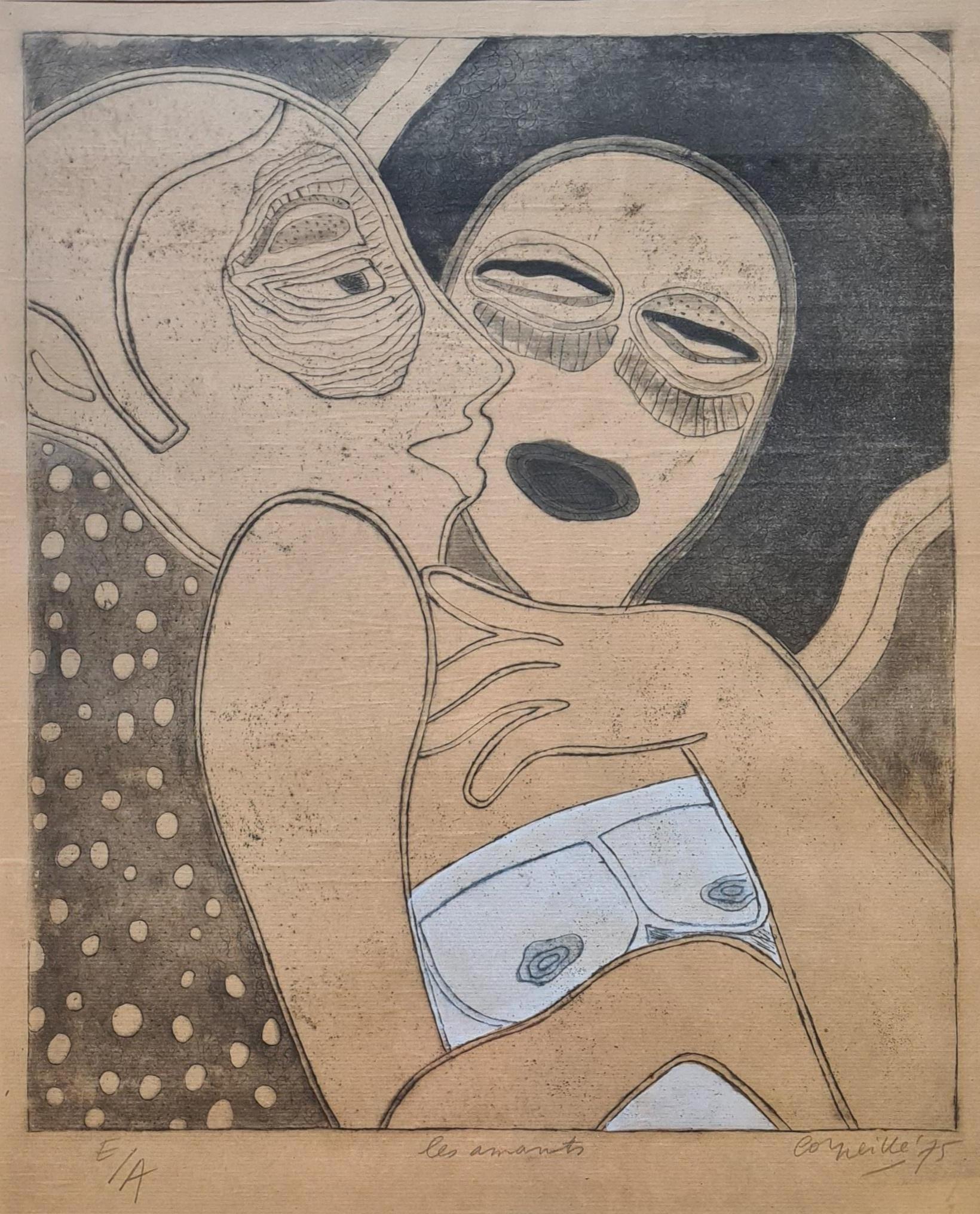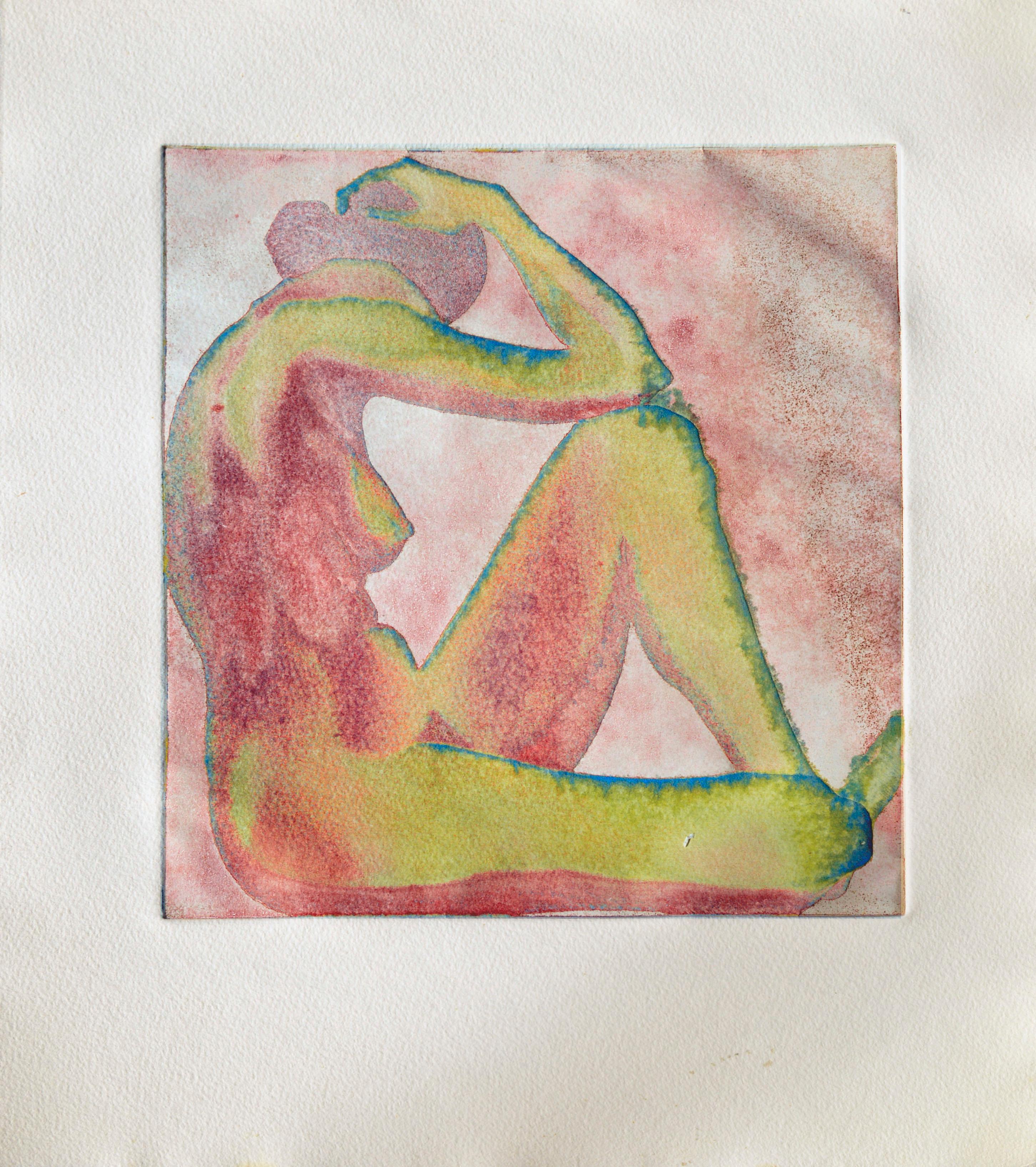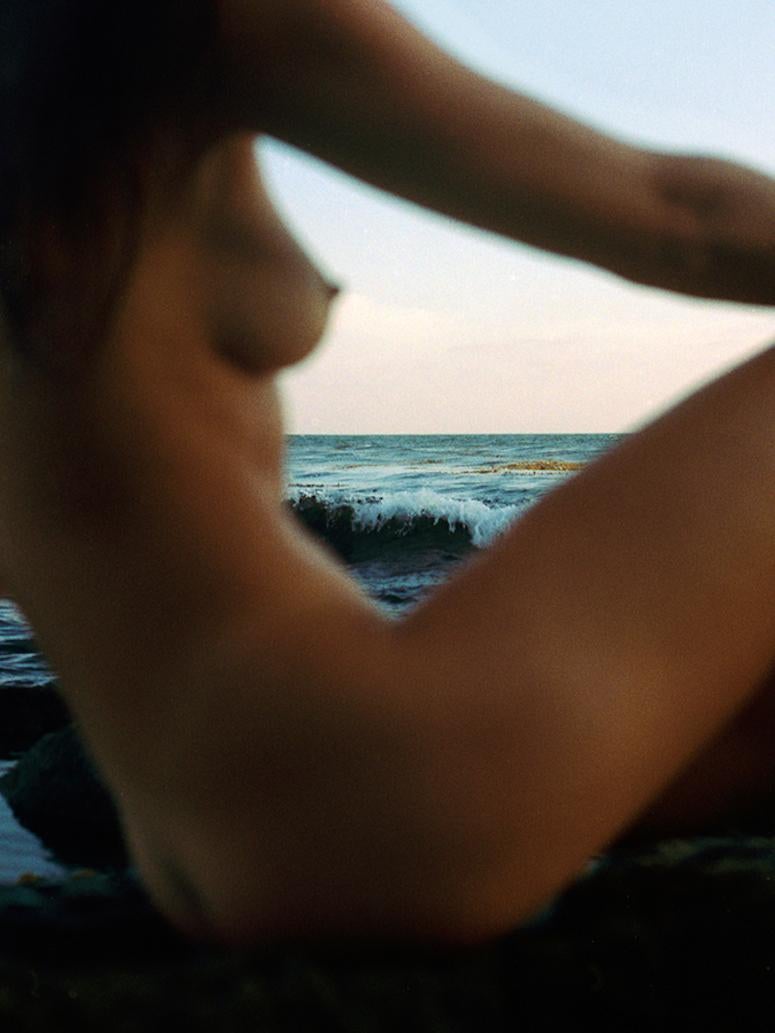Items Similar to R. Layni, Zeichnungen folio, "Reclining Nude w/Green Stockings" Collotype PL XI
Want more images or videos?
Request additional images or videos from the seller
1 of 5
(after) Egon Schiele & Max Jaffe R. Layni, Zeichnungen folio, "Reclining Nude w/Green Stockings" Collotype PL XI1917
1917
About the Item
Egon Schiele (1890 – 1918), AUSTRIA
“ART CANNOT BE MODERN, ART IS PRIMORDIALLY ETERNAL.” -SCHIELE
Defiantly iconoclastic in life and art, Egon Schiele is esteemed for his masterful draftsmanship and precocious insight into the human condition. Part of the first wave of Austrian Modernism, he was swept away by the Viennese fascination with the tension between Life and Death (known in the works of Freud and his later interpreters as Eros and Thanatos). Life, identified with attraction, love, sexuality, and reproduction, and Death, represented by distortion, disease, repulsion, and hysteria, often appeared in the same composition, thereby suggesting the frightening life cycle of the human mind and body.
Young throughout his career, Schiele universalized his childhood traumas, thriving libido, insecurities, fears, and longings. His contorted line, jarring contrasts, and flat areas of color, demonstrate an early alliance with Expressionist philosophy and artists who were relentlessly frustrated by conventionality in all its forms. Schiele’s work embodied man’s disorientation and confusion in a seemingly absurd world, a world plagued by disease and war. It continues to be astonishingly relevant today, not just because it helped define Modernism but also because it revealed the dark and immutable aspects of the human condition.
Zeichnungen is a fine art print portfolio published by Verlag der Buchhandlung Richard Lanyi, Vienna, 1917, printed by Max Jaffe in an edition of 400 under the supervision of Egon Schiele. The plates and negatives of the 12 printed images of original watercolors and drawings by Schiele were destroyed after the run. Included with the 12 unbound sheets of mono-chromatic printed images was a Title Page and essay about Schiele’s work printed verso and a Justification Page listing the 12 untitled works’ owners and dates created. At the bottom of the Justification page, Schiele hand-signed, dated and numbered each copy. The collection came in a string-tied box whose cover displayed a printed self-portrait by Schiele.
Often cast as an enfant terrible, who was imprisoned in 1912 for publicly displaying lewd erotic-based paintings and drawings, Egon Schiele (1890-1918) was in actuality a central figure of the avant-garde at the time this portfolio was printed. Schiele’s Zeichnungen portfolio provides a rare example of the existing link between Schiele, the iconic artist, and his Viennese cultural milieu. As expressed in the portfolio’s text, Schiele's hand joined so many ways of seeing to capture the erotic, the intellectual, the esthetic. In the early years of 20th century Vienna, there was no clear separation between fine art, science, sociology and politics or philosophy; the cross-pollinating character of Viennese intellectual life was robust. Rather than cut off and confined to the university, intellectual activity thrived in social spheres such as coffee houses and salons. Huge overlap existed among these interdisciplinary circles. In a city number-ing approximately 2 million, only a few hundred comprised the cultural and political elite. Schiele exhibited widely, helped to organize exhibitions and had earned such a following that upon the death of Gustav Klimt in February the year following Zeichnungen’s publication, Schiele had naturally taken up the torch as Klimt’s successor. As leader of the 49th Vienna Secession Exhibition in 1918, the responsibility to create an exhibition poster and art for the main gallery fell on Schiele’s shoulders. Critical accolades for his Expressionist work made certain Schiele’s leading position in the world of art. At the height of this success, however; Schiele’s life was cut short by Spanish Influenza. He died at the age of 28. Shiele’s Zeichnungen portfolio is all the more valuable as an art piece which was realized during his protracted lifetime as well as for the key insights it provides into the intellectual circles which characterized early 20th century Vienna. Schiele’s portfolio was a picture of Vienna, itself: a collaboration between fine artist; art collectors; art promotors; idea disseminators; scientists; and printers.
Buchhandlung Richard Lanyi, whose publishing branch of the business published Schiele’s Zeichnungen portfolio, was indeed one of these significant cultural spheres and places to gather. On its first floor was the bookstore and lecture room. Notable Sociologist, Karl Kraus, was a regular there. On the second floor, Lanyi housed a veritable overflow of prints, portfolios and original art works by Klimt, Kokoschka, and others including Schiele. Artists and intellectuals from many disciplines quite literally rubbed shoulders in this intimate space with the likes of wealthy industrialists. Art held a unique place within this social setting. Certainly, it was collected as a symbol of status and displayed in homes by the wealthy elite. Art also served a dual purpose; within these intellectual social spheres, art was a form of scholarship. Art was conversation and fodder for the promulgation of ideas within multi-disciplinary areas of intellectual and cultural interest. It was intended to be shared. A portfolio of images re-producing works of art which were not widely accessible, by nature of their permanent locations and the cumbersomeness to move them, was therefore an especially important contribution to the dynamic inner workings of Viennese high culture. Schiele’s Zeichnungen quickly sold out. It is a testament to the level of interest for Schiele’s work among these closely-knit circles of collectors as well as a fine example of the vigorous intellectual culture which existed generally in Vienna at the time.
The collotype print form was at this time the preferred method of reproducing fine works of art. The printer of Schiele’s Zeichnungen portfolio was Max Jaffe, a Viennese specialist in fine art collotypes. This dichromate-based photographic process had been invented in 1856. The gelatin plates required delicate preparation involving light exposure, washing, and curing. They were inked with a velvet or leather roller and printed using a hand proof process with a light-pressured press. Collotype plates could not be re-used; the limited edition prints made from colloid inks were stable and posed no danger of fading like other photographic processes of the time. In fact, the fine reticulations created on the plates using the collotype process produced prints of extremely high quality.
- Creator:(after) Egon Schiele & Max Jaffe (1890 - 1918)
- Creation Year:1917
- Dimensions:Height: 12 in (30.48 cm)Width: 18 in (45.72 cm)
- Medium:
- Movement & Style:
- Period:
- Condition:Literature: "Egon Schiele: The Complete Works" by Jane Kallir. 1990. Pg. 522 (#1486).
- Gallery Location:Chicago, IL
- Reference Number:1stDibs: LU46736447472

About the Seller
5.0
Gold Seller
These expertly vetted sellers are highly rated and consistently exceed customer expectations.
Established in 2013
1stDibs seller since 2016
83 sales on 1stDibs
Typical response time: 2 hours
- ShippingRetrieving quote...Ships From: Chicago, IL
- Return PolicyA return for this item may be initiated within 3 days of delivery.
More From This SellerView All
- R. Layni, Zeichnungen folio, "Nude With Raised Arm" Collotype plate IXLocated in Chicago, ILEgon Schiele (1890 – 1918), AUSTRIA “ART CANNOT BE MODERN, ART IS PRIMORDIALLY ETERNAL.” -SCHIELE Defiantly iconoclastic in life and art, Egon Schiele is esteemed for his masterful...Category
1910s Vienna Secession Nude Prints
MaterialsPaper
- R. Layni, Zeichnungen folio, "Two Girls, Lying Entwined" Collotype plate VIIILocated in Chicago, ILEgon Schiele (1890 – 1918), AUSTRIA “ART CANNOT BE MODERN, ART IS PRIMORDIALLY ETERNAL.” -SCHIELE Defiantly iconoclastic in life and art, Egon Schiele is esteemed for his masterful...Category
1910s Vienna Secession Nude Prints
MaterialsPaper
- H.O. Miethke Das Werk folio "Water Snakes I" collotype printBy Gustav Klimt & K.K. Hof-und StaatsdruckereiLocated in Chicago, ILWater Snakes I, no. 9 from the first installment of Das Werk Gustav Klimts Known by various names, Women Friends, Girlfriends, Water Snakes I and what Kli...Category
Early 1900s Vienna Secession Figurative Prints
MaterialsPaper
- H.O. Miethke Das Werk folio "Judith I" collotype printBy Gustav Klimt & K.K. Hof-und StaatsdruckereiLocated in Chicago, ILJudith I, no. 9 from the second installment of Das Werk Gustav Klimts Much like his treatment of the Classical personage, Danae, from Greek mythology, Klimt’s depiction of Judith takes an Old Testament character, a heroine who avenges the death of her husband by killing an Assyrian king, and firmly positions her in his present-day Vienna. His multicolored collotype rips the canvas from its gilded frame which directly references the subject with its title: “Judith und Holofernes”. Now in print form, Judith, holding the severed head of a male in murky shadow, is the ultimate Viennese femme fatale. Her likeness is unmistakably similar to a former lover of Klimt’s and famous Viennese soprano, Anna von Mildenburg. Though his allusion to ancient Assyria is apt, Klimt literally lifted the gold patterned background’s design motif from a relief detail from Sennacherib’s Palace displayed in a London museum. His context then is contemporary. In a sensual and sexually powerful tour de force, Klimt’s Judith...Category
Early 1900s Vienna Secession Figurative Prints
MaterialsPaper, Ink
- H.O. Miethke Das Werk folio "Water Snakes II" collotype printBy Gustav Klimt & K.K. Hof-und StaatsdruckereiLocated in Chicago, ILWater Snakes II, no. 9 from the fourth installment of Das Werk Gustav Klimts The last painting Klimt exhibited with the Secession before resigning, Water ...Category
Early 1900s Vienna Secession Figurative Prints
MaterialsPaper
- H.O. Miethke Das Werk folio "Danaë" collotype printBy Gustav Klimt & K.K. Hof-und StaatsdruckereiLocated in Chicago, ILDanaë, no. 2 from the fourth installment of Das Werk Gustav Klimts Danae originates from Greek mythology. She is the daughter of the King of Argos. Because a...Category
Early 1900s Vienna Secession Figurative Prints
MaterialsPaper
You May Also Like
- The Drunkard in Spring —after Gustav Mahler's 'The Song of the Earth'Located in Myrtle Beach, SCArthur Paunzen, 'Der Trunkene im Frühling' (The Drunkard in Spring) from the suite 'Song of the Earth', etching, aquatint, and drypoint, 1920. Signed and titled in pencil. Signed in the plate, lower right. A fine, richly-inked impression, on cream, wove Japan paper; the full sheet with margins (2 1/4 to 4 1/4 inches), in good condition. Image size 12 3/8 x 9 1/8 inches; sheet size 19 5/8 x 13 5/8 inches. Matted to museum standards, unframed. ABOUT THIS WORK Pauzen’s suite of six etchings 'Das Lied von der Erde' (The Song of the Earth), published in 1920, was inspired by Gustav Mahler...Category
1920s Vienna Secession Figurative Prints
MaterialsEtching, Drypoint, Aquatint
- CoBrA, Signed Limited Edition Lithograph, L'épreuve d'Artiste 'Les Amants'By Guillaume Cornelis van Beverloo (Corneille)Located in Cotignac, FRSigned limited edition lithograph, 'Les Amants', by Belgian/Dutch artist, Corneille. This is the artists own copy, L'épreuve d'artiste, from the edition of 40, Vincenzo Bitetti, Potenza of the rarer monochromatic version. Eau forte and aquatinte on craft paper with white highlights added. It is signed titled and dated in pencil by the artist. Presented in patinated wood frame under glass. Corneille was the pseudonym of Guillaume Cornelis van Beverloo, born July 4, 1922 in Liège (Belgium), of Dutch parents, and died in Auvers-sur-Oise (Val-d'Oise) September 5, 2010, he was a Dutch painter, engraver, sculptor and ceramist After attending the School of Fine Arts in Amsterdam, Corneille began exhibiting in 1946, then discovered surrealism. Co-founder in 1948 with Karel Appel, Eugène Brands, Constant Nieuwenhuis, Anton Rooskens and Theo Wolvecamp, of the Experimentele Groep in Holland movement which publishes the journal Reflex, anticipating the magazine Cobra (journal) which would appear the following year in Denmark, Belgium, then in the Netherlands. He is one of the initiators of Cobra with Karel Appel, Constant Nieuwenhuis, Asger Jorn and Dotremont. This group was soon joined by poets, painters and writers including Jacques Doucet, Pierre Alechinsky, Henry Heerup, Reinhoud, Else Alfelt, Carl-Henning Pedersen, Egill Jacobsen, C.O. Hultén, Anders Osterlind...Category
1970s Expressionist Figurative Prints
MaterialsPaper, Watercolor, Black and White, Lithograph
- Nude Figure in RedBy Patricia A. PearceLocated in Soquel, CANude in Red, a collotype figure study by Patricia A. Pearce (American, b. 1948). Unframed. Signed "PP" on verso. Image: 8.5"H x 7.75"W. Patricia Pearce was a California artist and a...Category
1980s Expressionist Nude Prints
MaterialsColor, Paper, Ink
- "Brooke (Blue Waves)" Photography 30" x 22" inch Edition 1/7 by Larsen SoteloBy Larsen SoteloLocated in Culver City, CA"Brooke (Blue Waves)" Photography 30" x 22" inch Edition 1/7 by Larsen Sotelo NOT FRAMED - ships in a tube Giclee (Archival Ink) print on 310G Platine Fibre Cotton Rag w/satin fin...Category
21st Century and Contemporary Expressionist Nude Photography
MaterialsArchival Ink, Rag Paper, Giclée
- Bekleidete und nackte Frau (Clothed and Naked Woman) /// German ExpressionismBy Karl Schmidt-RottluffLocated in Saint Augustine, FLArtist: Karl Schmidt-Rottluff (German, 1884-1976) Title: "Bekleidete und nackte Frau (Clothed and Naked Woman)" Portfolio: Das Spiel Christa vom Schmerz der Schönheit des Weibes (The Play Christa from the Pain of the Beauty of the Woman) *Issued unsigned Year: 1918 Medium: Original Woodcut Engraving on wove paper Limited edition: Unknown Printer: Fritz Voigt, Berlin, Germany Publisher: Verlag Die Aktion, Berlin, Germany Reference: Schapire No. 221, page 45; Jentsch No. 35. Rifkind No. 2563; Lang No. 300; Reed No. 118 Overall size with attached page: 8.5" x 10.63" Sheet size: 8.5" x 5.38" Image size: 6.5" x 3.38" Condition: Toning to sheet (as normal). In very good condition Very rare Notes: Provenance: private collection - Oxnard, CA. Comes from a complete originally bound 48 page folio with 9 original woodcut engravings by Schmidt-Rottluff. Text by Alfred Brust. Presently attached to its accompanying page. The cover and title pages in pictures are not included, only for reference/provenance. There is an example of this work in the permanent collection of the Brücke Museum, Berlin, Germany. Biography: Karl Schmidt-Rottluff (born December 1, 1884, Rottluff, near Chemnitz, Germany—died...Category
1910s Expressionist Nude Prints
MaterialsEngraving, Woodcut
- Kunsthandel Wolfgang Werner KG (Nudes) /// German Expressionism Schmidt-RottluffLocated in Saint Augustine, FLArtist: (after) Karl Schmidt-Rottluff (German, 1884-1976) Title: "Kunsthandel Wolfgang Werner KG (Nudes)" Year: 1984 Medium: Original Offset-Lithograph, Exhibition Poster on yellow wove paper Limited edition: Unknown Printer: Unknown Publisher: Kunsthandel Wolfgang Werner KG, Bremen, Germany Framing: Recently framed in a contemporary black moulding with frame space Framed size: 29.25" x 19.5" Sheet size: 27.25" x 17.75" Image size: 9.5" x 12" Condition: In excellent condition Extremely rare Notes: Poster produced for a special posthumous exhibition of Rottluff's early watercolors and printmaking "Schmidt Rottluff" at Kunsthandel Wolfgang Werner KG, Bremen, Germany from March 8 - May 12, 1984, in tribute to the artist's, would have been, 100th birthday. GIA Gallery Poster Disclaimer: Not to be confused with thousands of contemporary inkjet/giclée/digital reproductions ignorantly or deliberately passed off as originals on the market today. The examples we offer here are the original period vintage (exhibition) posters, created and designed by, or under the supervision and authorization of the artist or their respective estate (posthumously), for various exhibitions and events in which they participated. If applicable, this poster is also fully documented within its respective artists' official catalogue raisonné of authentic graphic works, prints, and or posters. Biography: Karl Schmidt-Rottluff (born December 1, 1884, Rottluff, near Chemnitz, Germany—died August 9, 1976, West Berlin [now Berlin]), German painter and printmaker who was noted for his Expressionist landscapes and nudes. In 1905 Schmidt-Rottluff began to study architecture in Dresden, Germany, where he and his friend Erich Heckel met Ernst Ludwig Kirchner and Fritz Bleyl, two other architecture students who shared their passion for painting. Together they formed the organization of Expressionist artists known as Die Brücke...Category
1980s Expressionist Nude Prints
MaterialsLithograph, Offset
